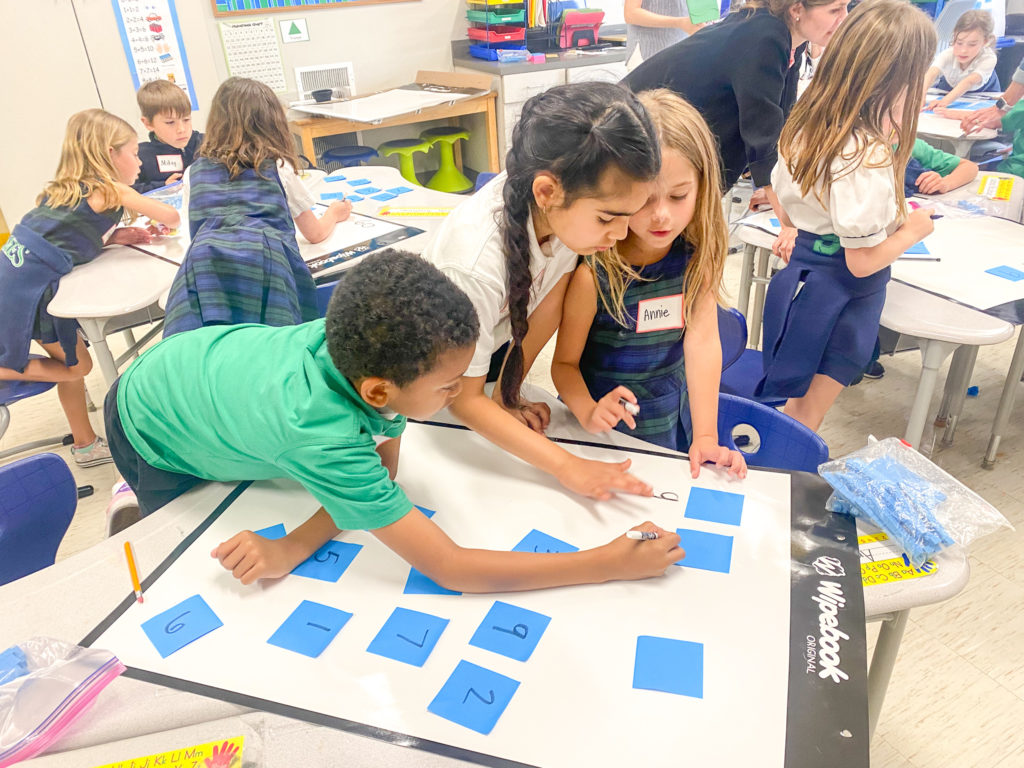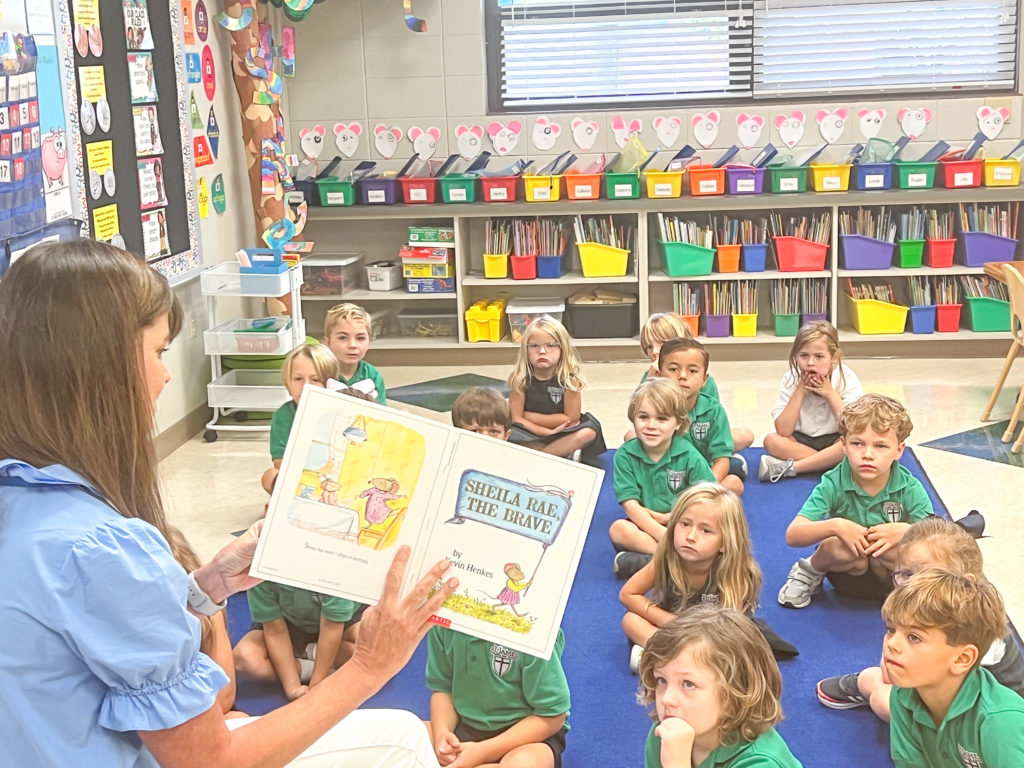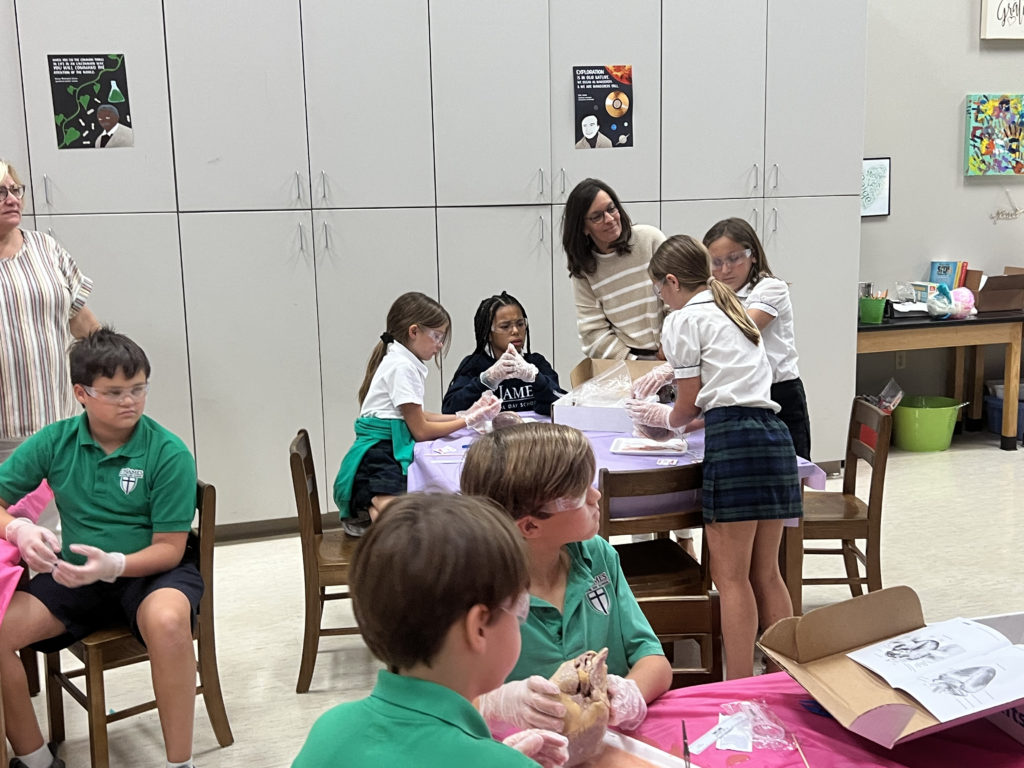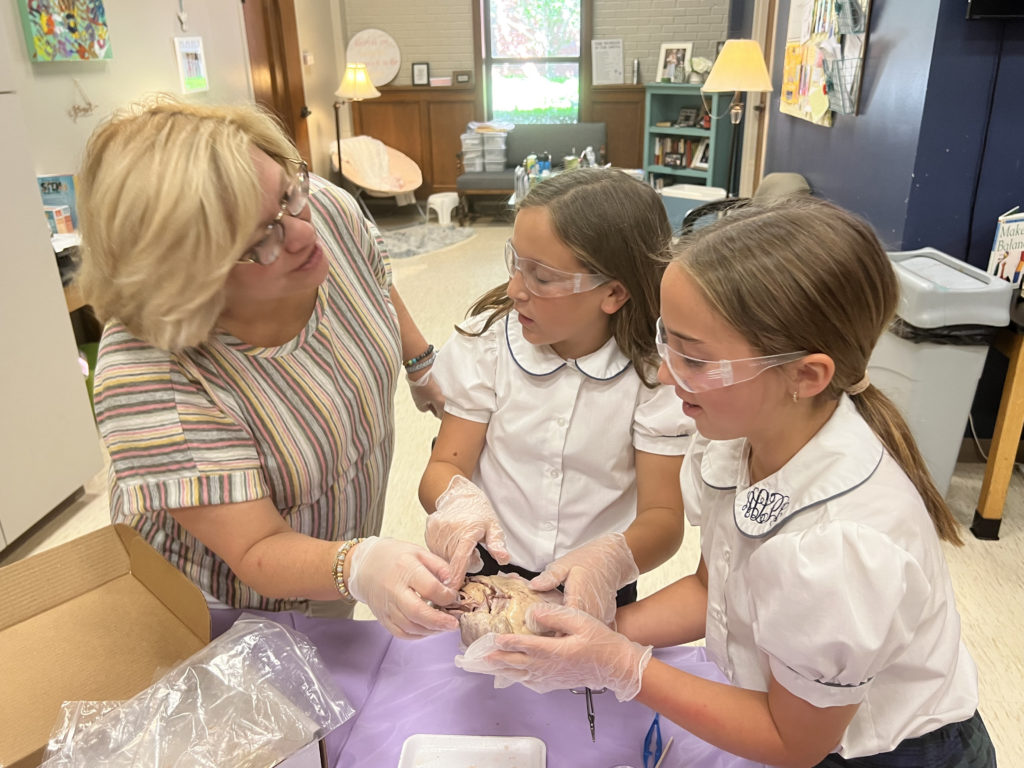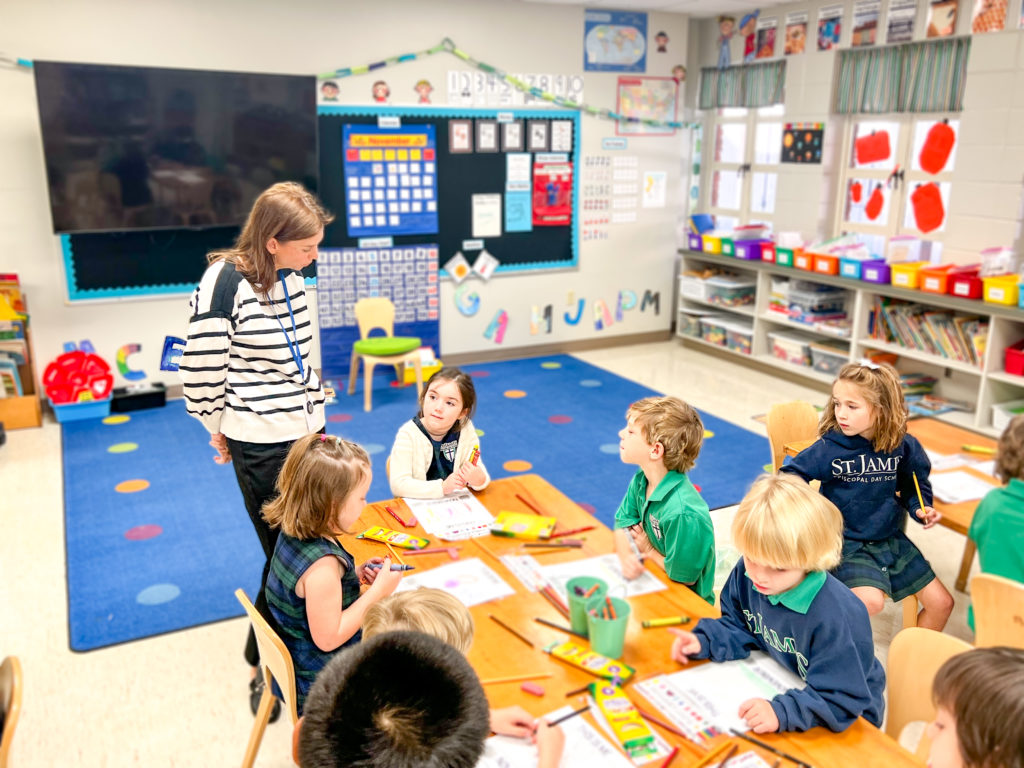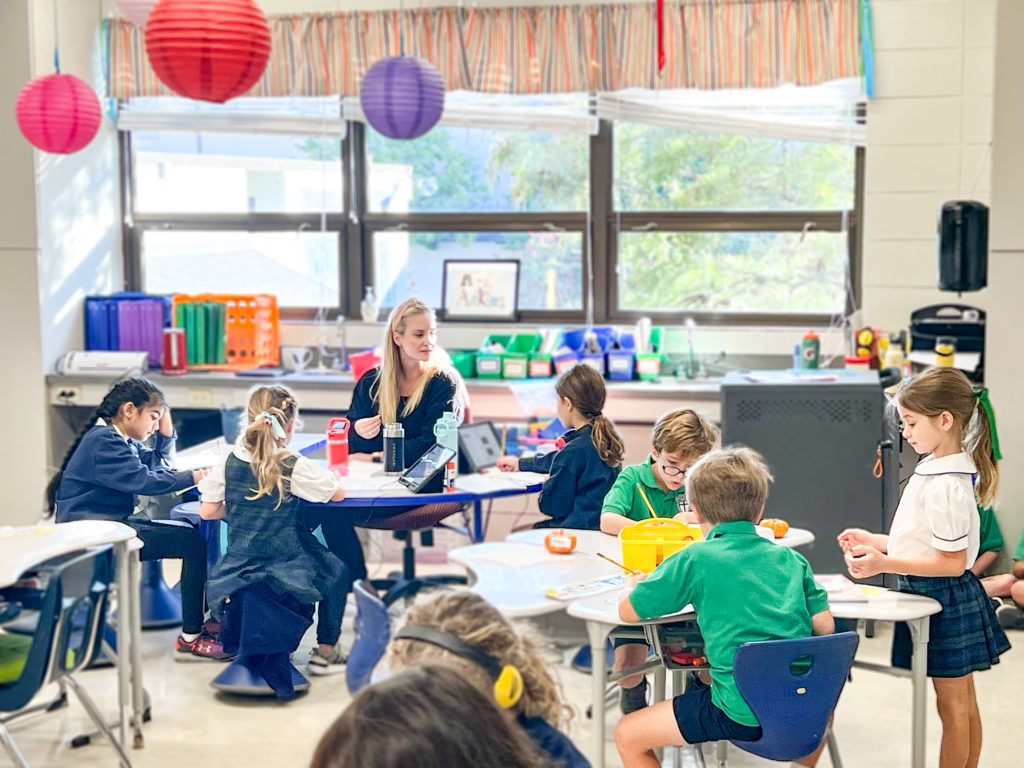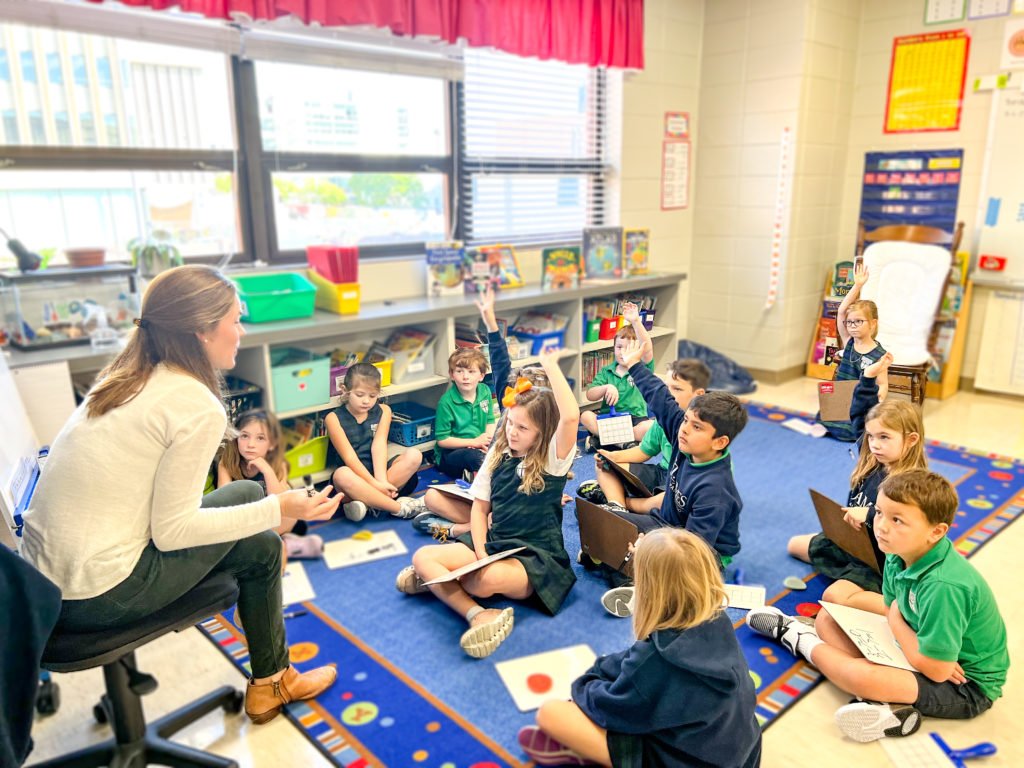
By Bridget Henderson
For many parents looking at school options for their child, their decision might hinge on the school’s student-teacher ratio. Without the right ratio, they worry that their child will get lost in a sea of students—and that their child’s unique needs will go unmet in overcrowded classrooms and distracting environments.
These fears are well-founded. Louisiana state law allows kindergarten through 3rd-grade classes in East Baton Rouge Parish to have a 20-1 student-to-teacher ratio, while upper elementary grades can have as high as 33 students for every teacher.
While we might instinctively know that a classroom with 33 kids and only one teacher simply will not be able to address the diverse learning needs of each student, does the research back this up?
In fact, it does. Class size has been found to be one of the most reliable indicators of student achievement. One of the gold-standard studies on class size conducted in the 1980s found that smaller class sizes could increase student achievement by an amount equivalent to receiving 3 additional months of schooling. In a classroom setting, the reality is that the lower the student-teacher ratio, the more personalized the experience, and therefore the more learning that occurs.
But determining just the right student-teacher ratio and creating the right mix of learners in a classroom is more challenging than simply counting up the number of students in a class. Many factors impact the ideal class size for students, including cohort age, classroom structure, learning needs, and—most importantly—the number of faculty devoted to a class.
Here’s how St. James approaches creating the ideal student-teacher ratio.
Getting Student-Teacher Ratio Right
Calculating student-teacher ratios can be more complex than it seems at first glance. It’s not a matter of simply counting the number of students in a classroom. So what goes into the thinking when we create classroom communities and deploy support personnel?
Some factors we consider include:
- The personality of the class and individuals within it.
- The class’s overall academic strengths and weaknesses.
- The academic versus socio-emotional needs of the group.
Schools typically determine their student-to-teacher ratio by including enrichment teachers and other learning support specialists. For example, St. James offers an average 7 to 1 student-to-faculty ratio, allowing us to provide a level of individualized instruction that ensures that our students have the support they need to learn, grow and thrive.
But that doesn’t mean that every class consists of 7 students. In fact, for elementary-age students, classes of this size would be too small to support the necessary socio-emotional learning that children need to develop their social skills. We intentionally create classes with at least 12 students so that we can create a dynamic socio-emotional environment. Finding the right balance is key.
Our students enjoy a low student-to-teacher ratio because our classes include certified, experienced academic enhancement teachers who offer personalized support in one-on-one or small groups. This support is designed to meet each student’s individual needs, whether that means providing additional learning support to help some students master the material or offering additional challenges for more advanced students.
This approach ensures that we provide the individualized instructions students need to learn to their fullest potential.
Meeting Learners Where They Are
Tailoring instruction to meet our students’ needs is the cornerstone of our approach at St. James. The targeted instructional supports we put in place allow us to help students learn at their own pace.
We meet the students where they are by determining their strengths and weaknesses and providing the “just right” challenges to help them move to the next level. We can engineer lessons to offer support for students who are struggling and challenges for those who excel. Having the right student-teacher ratio means that you don’t have to simply “teach to the middle” and hope for the best.
For example, students might work on writing skills by having regular, individual writing conferences with a teacher to work on their own writing. This kind of one-on-one approach is a gold standard of writing instruction, but it can be all but impossible with 20 or 30 students in a class and only one teacher.
Ensuring Socio-Emotional Growth
While lower student-teacher ratios benefit student learning, socialization plays a key role as well. Socio-emotional learning, cultivating a love of learning, and creating a joyful school environment are critical components of a quality lower-school education as well, every bit as important to students’ long-term growth and development as academic instruction. Too small a class and too little social mixing can actually have a negative impact on student development and growth.
That’s why our grade-level teams work closely to create strong grade-level communities. Activities such as shared recess and lunch times, grade-level morning meetings, and field trips help to build community and provide opportunities for socialization.
Students within a grade can also benefit from the support of cross-group instruction. Students from different homeroom classes work together with a learning enhancement teacher to pursue specialized interests or work on specific learning goals.
For example, in our current kindergarten class, we carefully explored what model would best meet the unique needs of the class and divided it into two full classes with three full-time teachers. At any given time during the day, each of the three teachers spends their time working with a small group of students on specialized topics and learning outcomes based on the student’s unique interests and abilities.
This model allows for even greater individual, one-on-one instruction and support for students, and each child receives just the right level of support and instruction. With this model, the students also get all of the benefits of socialization that come from having the right cohort size in their classroom, allowing them to master developmentally-appropriate skills such as learning to share, to cooperate, to take turns, and to engage in social, cooperative work and play.
Smaller class sizes really do allow students to receive the education that is right for them. And it’s what allows St. James to live up to our mission of nurturing the whole child and ensuring that each child reaches his or her highest potential.
